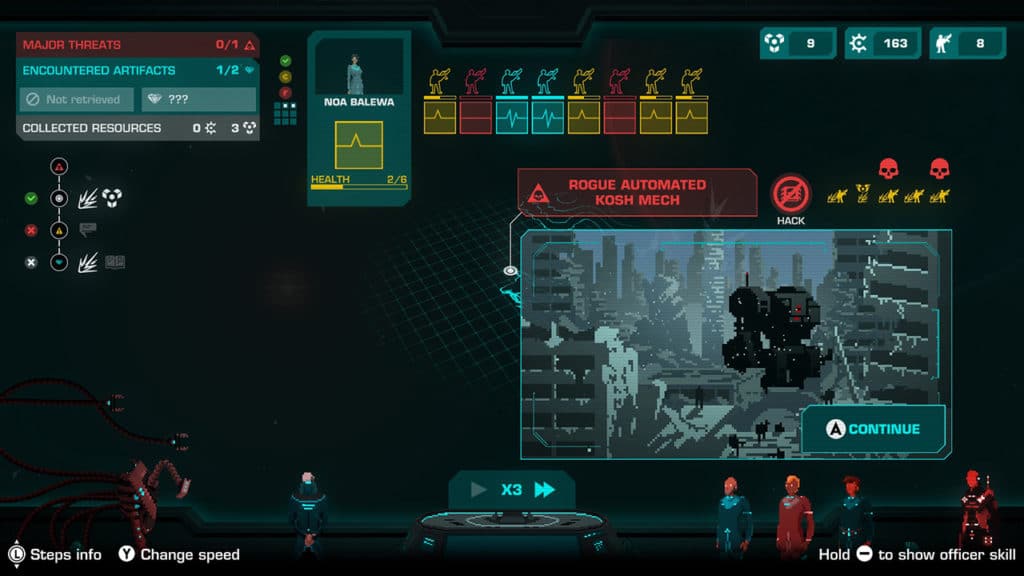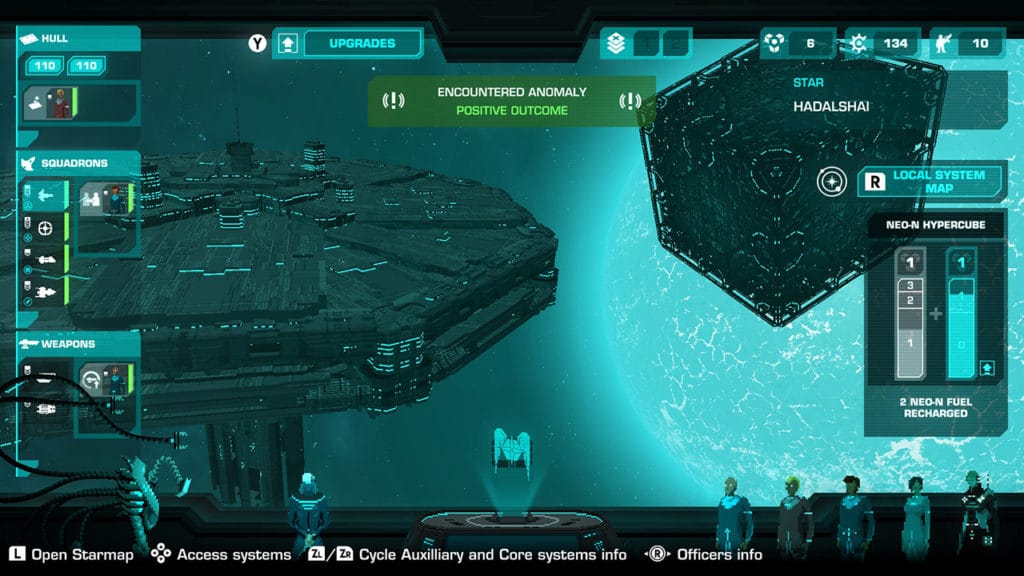Welcome to our review of Star Trek’s The Borg. The game meets rogue-lite … meets well more knock-offs. Sorry, I read many positive reviews about Crying Suns, but they indeed haven’t played the Nintendo Switch version of this game. But, hey, I’ll let you be the judge of that.
When FTL meets Foundation… and Dune
Crying Suns is a tactical rogue-lite (trl) that puts you in the role of a space fleet commander as you explore a mysteriously fallen empire. In this (supposedly) story-rich experience inspired by Dune and Foundation, each successful run will uncover the truth about the Empire… and yourself as well. Since it’s a TRL, the game focuses mainly on a mixture of space exploration in a procedurally-generated universe combined with tactical fights between battleships and their squadron fleets. According to the developers, the game offers more than 300 possible story events with a storyline spanning a total of six chapters. The whole game feels like a trip towards the sci-fi of the good old days, like Foundation, Dune, Battlestar Galactica. I am a Star Trek fan (or Trekkie like they like to call it), and the story felt like the Borg arch in Star Trek TNG. However, I don’t want to spoil the arc for those who haven’t seen Star Trek TNG yet, so I’ll put some spoiler tags to give you an idea.
The Borg were a pseudo-species of cybernetic humanoids, or cyborgs, from the Delta Quadrant known as drones. No single individual truly existed within the Borg Collective (with the possible exception of the Borg Queen), as all Borg were linked into a hive mind which connected all of them and allowed information from every drone who had been brought into the collective to be shared. Their ultimate goal was to attain ‘perfection through the forcible assimilation of diverse sentient species, technologies, and knowledge that would be added and absorbed into the hive mind. As a result, the Borg were among the most powerful and feared entities in the galaxy, without really being a valid species at all. Even the powerful Q Continuum was wary of provoking the Borg.
Flaws
There are some notable flaws. The combat is enjoyable yet lacks some depth/complexity that you’d want out of an RTS-like system and can feel a little bit like a chore later in the game. It’s once you get into ship-to-ship combat where things get most disappointing. Your actual ship is relegated to using weapons occasionally. Still, the main focus of the fight is deploying a fleet of small groups of ships to attack the other main ship in a simplistic RTS battle. If a unit dies, it goes into a cooldown timer to then be redeployed at half health. This 50% health penalty is persistent across conflicts unless you spend money to repair them. It gets incredibly frustrating to spend money fixing your fleet to see them destroyed again so quickly and be back to 50% health until you repair them again.
Another thing I noticed was the writing of Kaliban especially clashes with everything else that the game had set up. Maybe because the studio is French, something doesn’t *quite* fit for Kaliban’s intended “voice”? Loading times on the Switch are horrible and combine this with an extremely complicated tutorial and user interface, and you can kiss a fun goodbye. Replayability is also, almost paradoxically for a rogue-lite, limited after completing the final chapter. In contrast to the new gold standard of rogue-likes/lites, Hades thrives on its replayability. But that’s not a fair comparison. Still, even Undermine has more replayability than Crying Suns.
Conclusion
To round out the negatives that were the final nail in the coffin for my interest in this game, the “normal” difficulty mode wasn’t challenging, whereas the “hard” mode was an absolute nightmare. Exacerbating this, whether you are successful or not in completing a “chapter” of the game, you are treated to a game over screen of sorts and need to restart the next chapter(or current chapter if you failed) from scratch (because reasons). For me, this killed any attachment I had to my ship and crew, and I wish they had found a different way for the rogue-like progression to work. Again, not my cup of tea, but people on the PC tend to like it – so maybe try the game on Steam instead of the Nintendo Switch.



